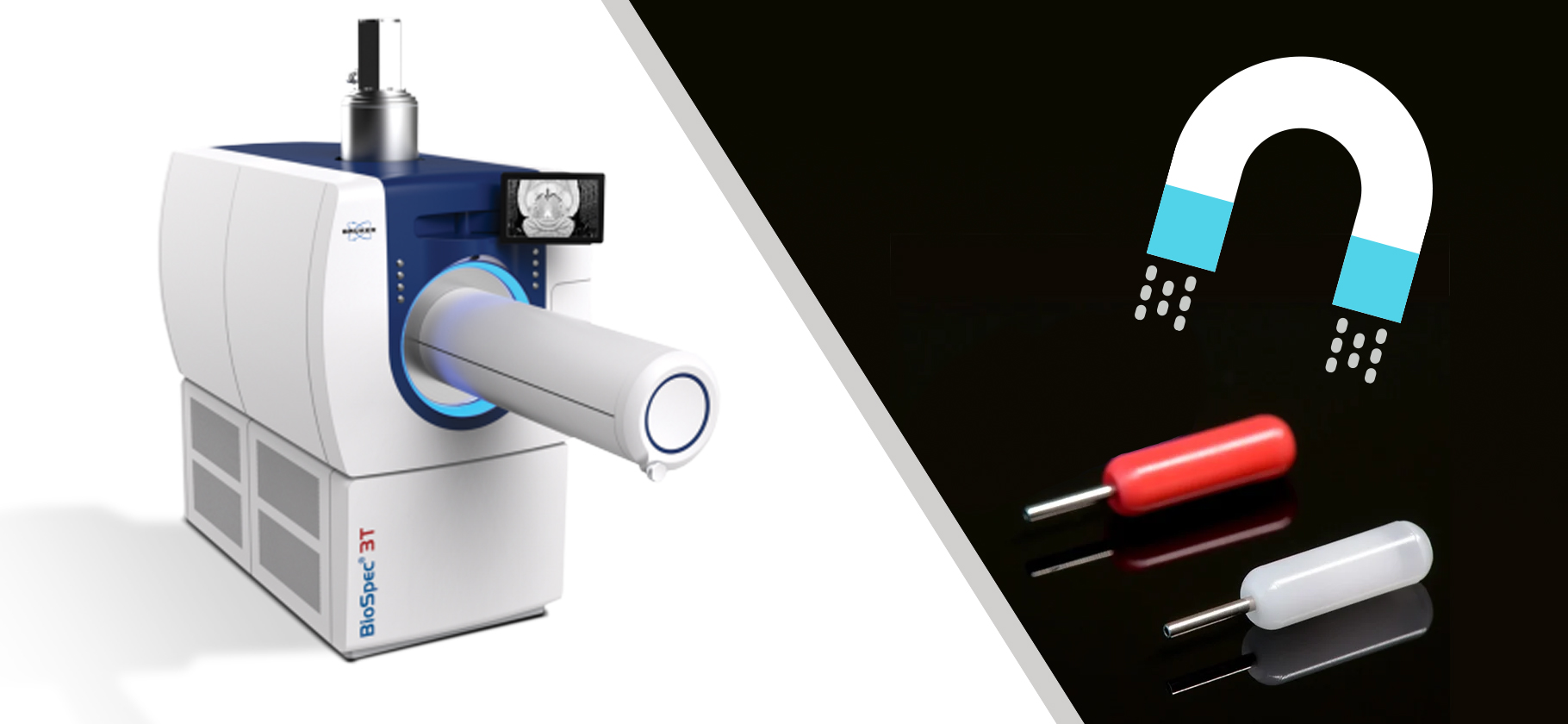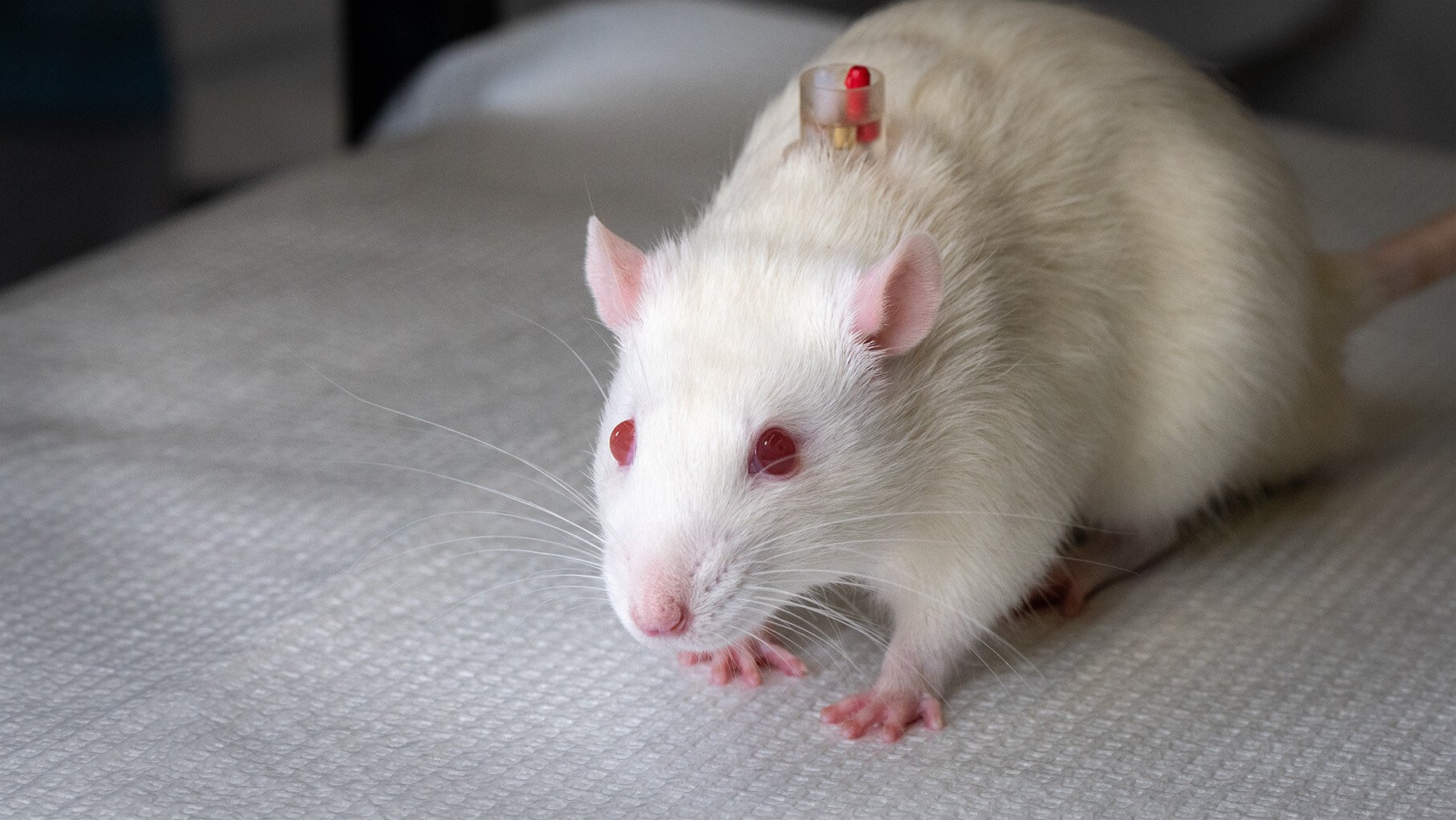Pre-clinical MRI Scanner (image courtesy of Bruker)
Magnetic resonance imaging can be as useful in pre-clinical research as it is in human medicine. Imaging a catheterized mouse or rat presents some challenges, since most catheter connectors are made of stainless steel hypodermic tubing which are not compatible with the strong magnetic fields in the scanner.
The simplest way to have an MRI-compatible catheter system is to exteriorize the catheter and plug it with a short segment of fishing line of the appropriate thickness. If you need to access the catheter in the MRI, you can use couplers made of PEEK.
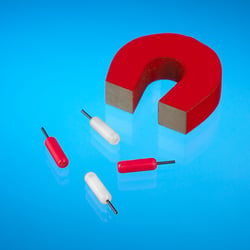 However, there are downsides to simple exteriorized catheters. Removing plugs from catheters and connecting couplers is cumbersome and opens up the catheter to bacteria and air bubbles. We developed the miniature PinPort™ to solve these problems; however our standard PinPort™ has a stainless steel connector. To make it MRI-compatible, we use Nitinol tubing instead. Nitinol, nickel-titanium, is non-ferromagnetic and produces fewer artifacts than stainless steel; it’s used in human stents and other implanted medical devices and is generally considered MRI-compatible. If you need to infuse or withdraw during the MRI, use a Pinport-to-tubing connector that also contains Nitinol (part no. PNP3MC/25-MRI.)
However, there are downsides to simple exteriorized catheters. Removing plugs from catheters and connecting couplers is cumbersome and opens up the catheter to bacteria and air bubbles. We developed the miniature PinPort™ to solve these problems; however our standard PinPort™ has a stainless steel connector. To make it MRI-compatible, we use Nitinol tubing instead. Nitinol, nickel-titanium, is non-ferromagnetic and produces fewer artifacts than stainless steel; it’s used in human stents and other implanted medical devices and is generally considered MRI-compatible. If you need to infuse or withdraw during the MRI, use a Pinport-to-tubing connector that also contains Nitinol (part no. PNP3MC/25-MRI.)
Exteriorized catheters, with a plug or a PinPort™, have other issues. Fluid can evaporate through exposed external tubing, pulling blood into the tip which can then clot and block the catheter. Animals might pull out their catheters while grooming. You can’t group house them, and you can’t connect a tether for unrestrained continuous infusion (outside the MRI, of course). Our Vascular Access Buttons™ for mice and rats solve all these issues, but since the standard versions use magnets to connect to tethers, for MRI-compatible versions we drop back to our original designs and use Nitinol connectors.
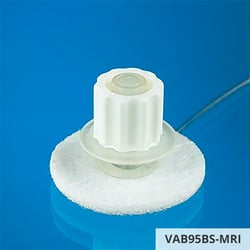 The rat button is part number VAB95BS-MRI. If you need to infuse inside the MRI, request a blue twist-in connector with a nitinol tube.
The rat button is part number VAB95BS-MRI. If you need to infuse inside the MRI, request a blue twist-in connector with a nitinol tube.
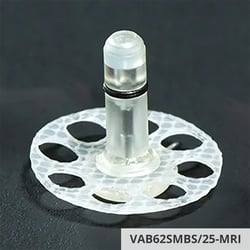 The mouse button, with a silicone subcutaneous disk is VAB62SMBS/25-MRI. It can also be made with a polyester felt disk on request (part no VAB62BS/25-MRI). To connect to this button in the MRI, use the same PNP3MC/25-MRI connector that you would with a PinPort™.
The mouse button, with a silicone subcutaneous disk is VAB62SMBS/25-MRI. It can also be made with a polyester felt disk on request (part no VAB62BS/25-MRI). To connect to this button in the MRI, use the same PNP3MC/25-MRI connector that you would with a PinPort™.
Several options for MRI-compatible catheter access devices designed for mice and rats are available. Contact us for more information, or request a quote.
